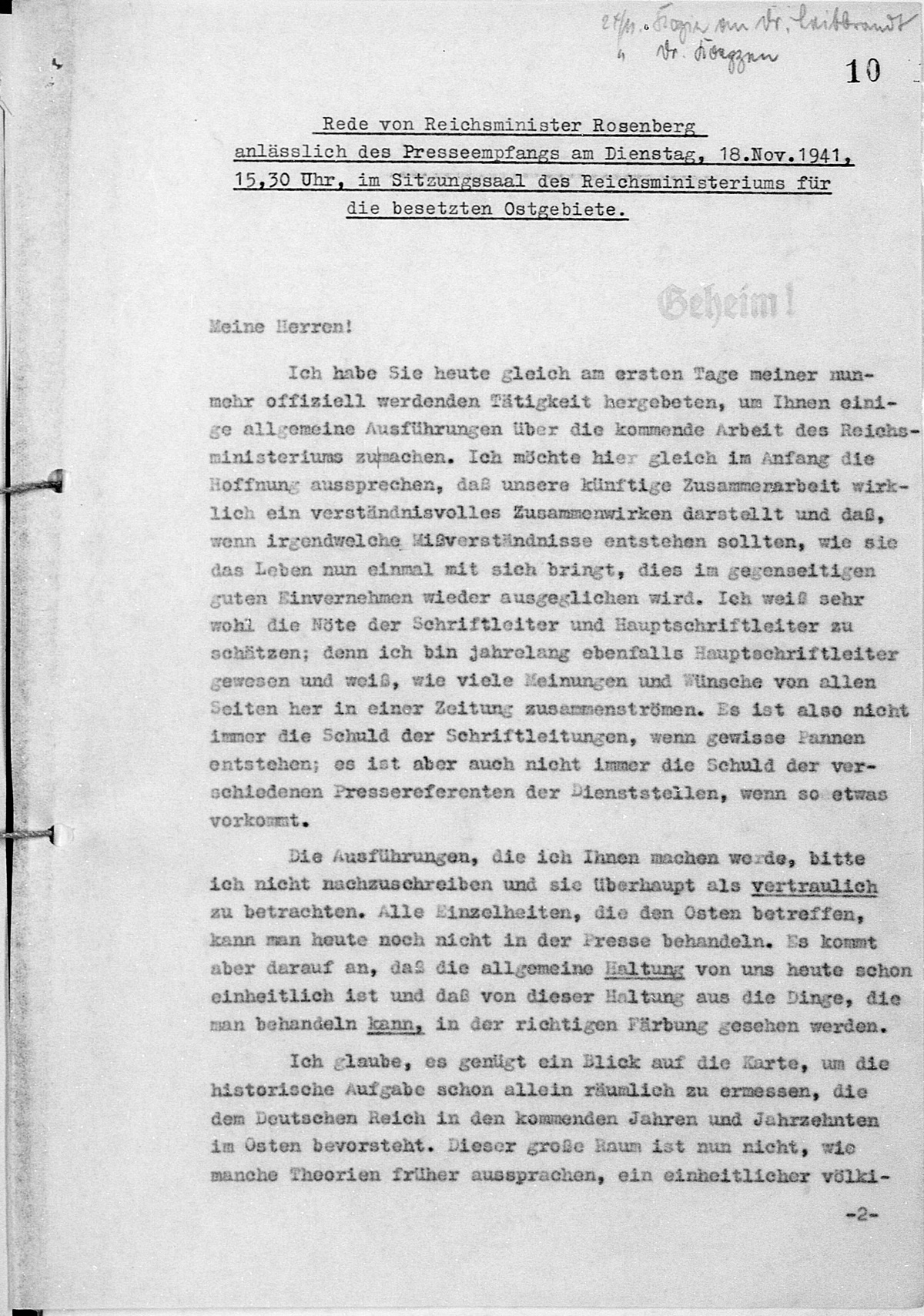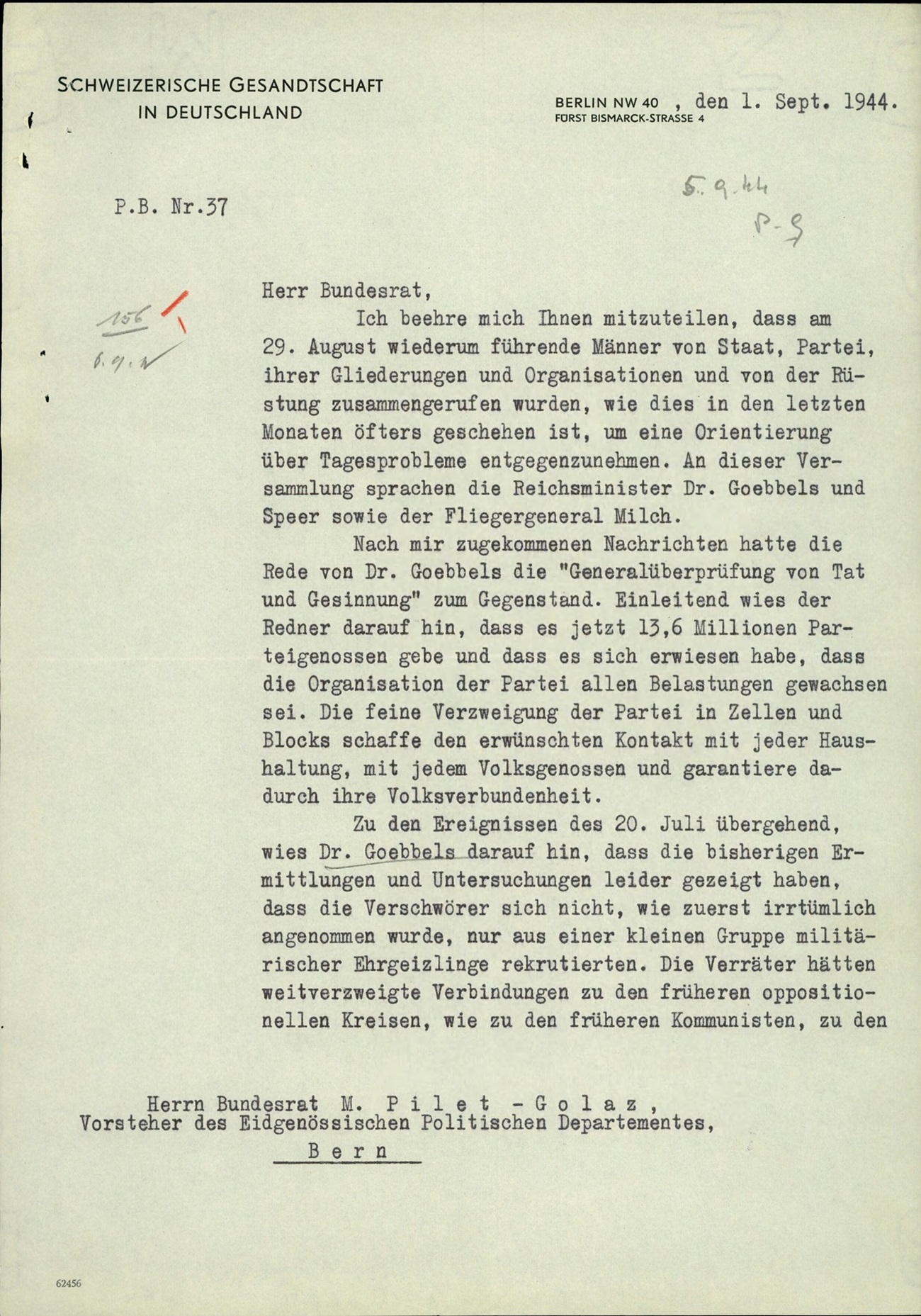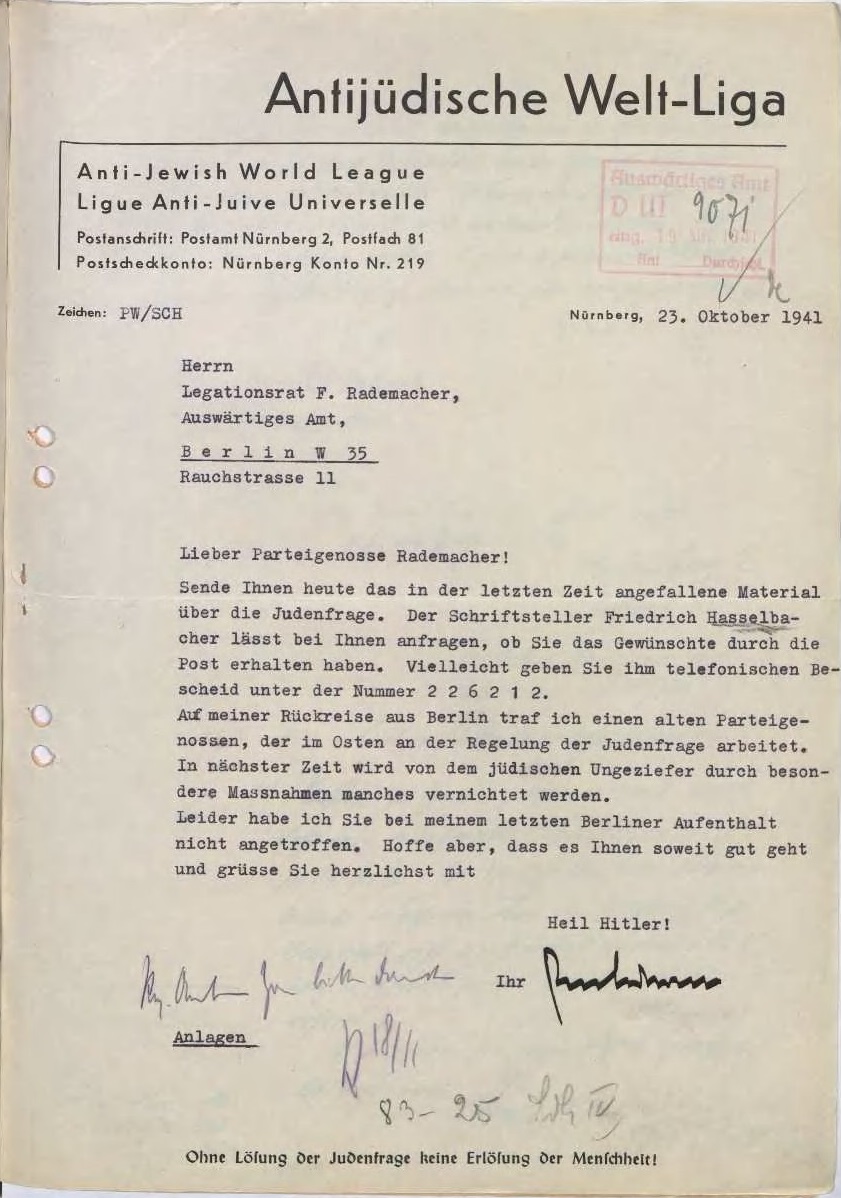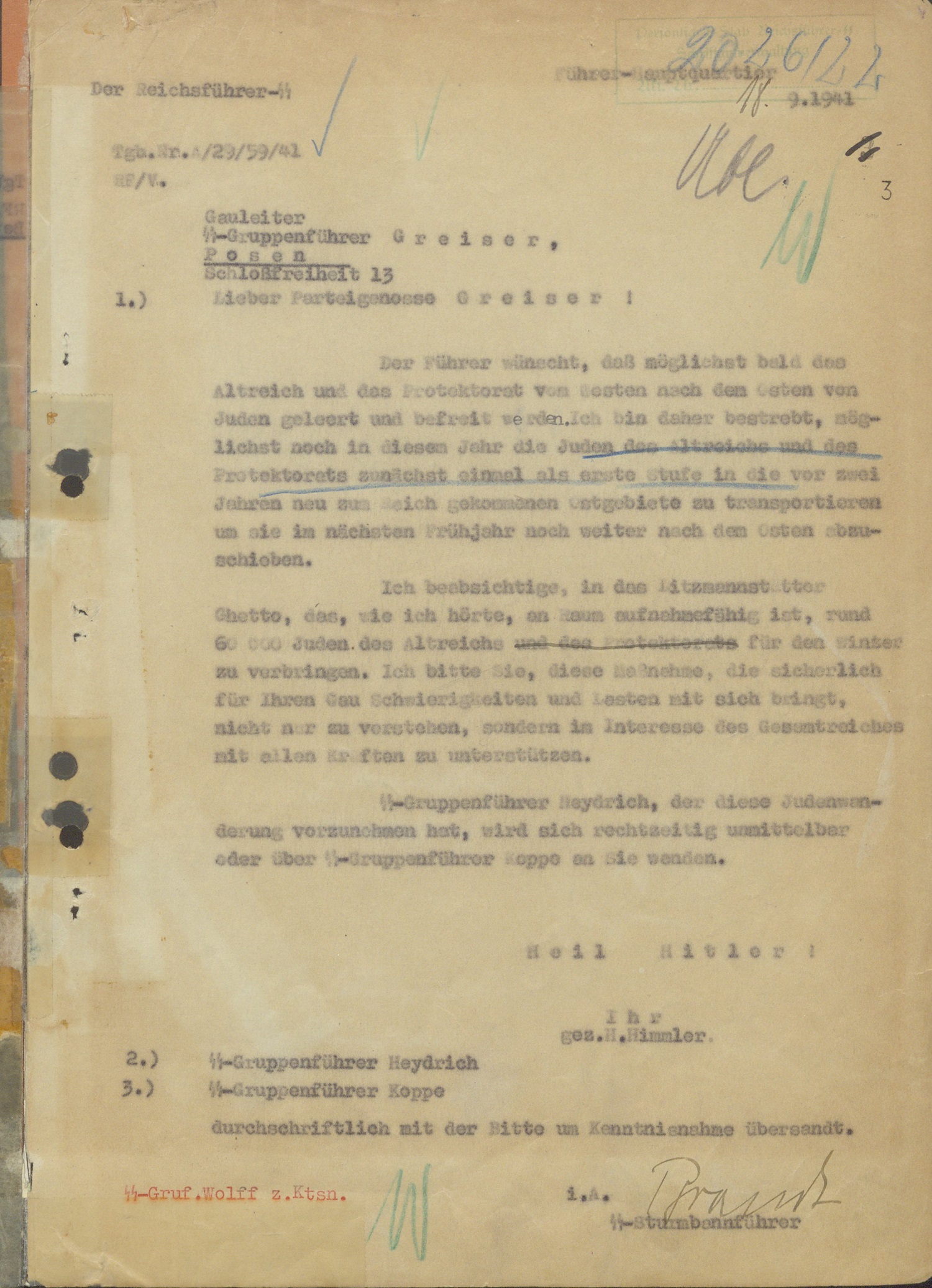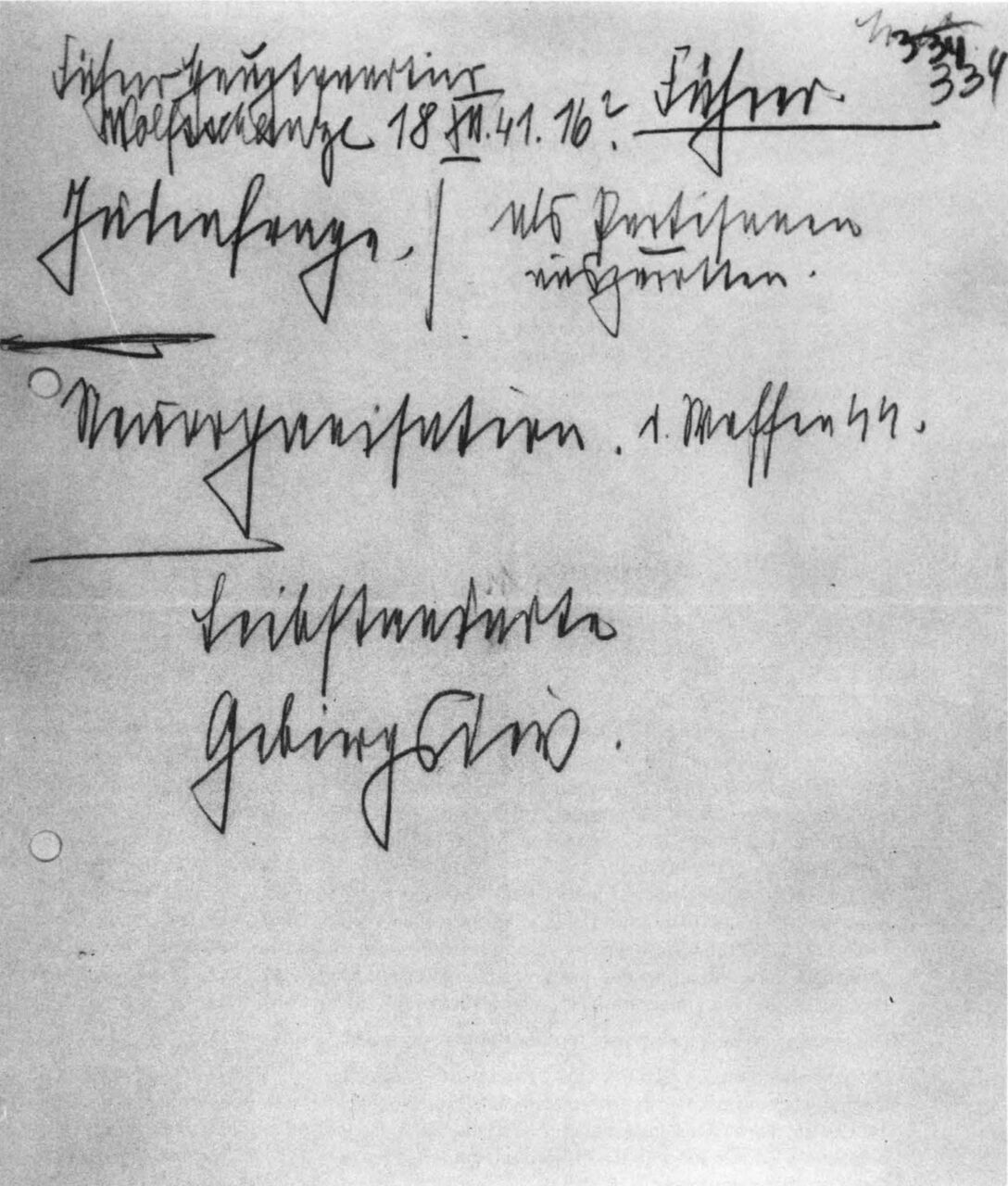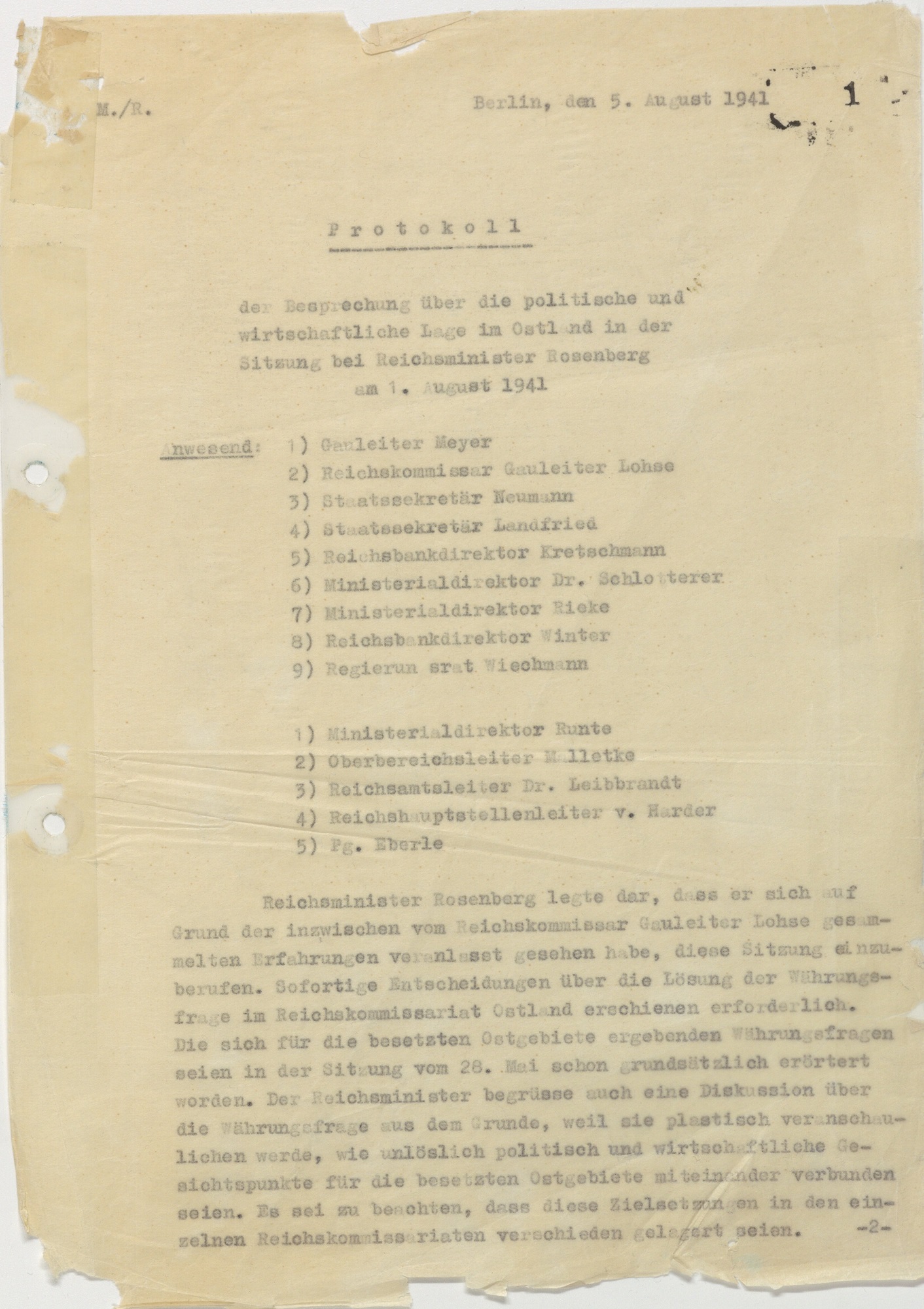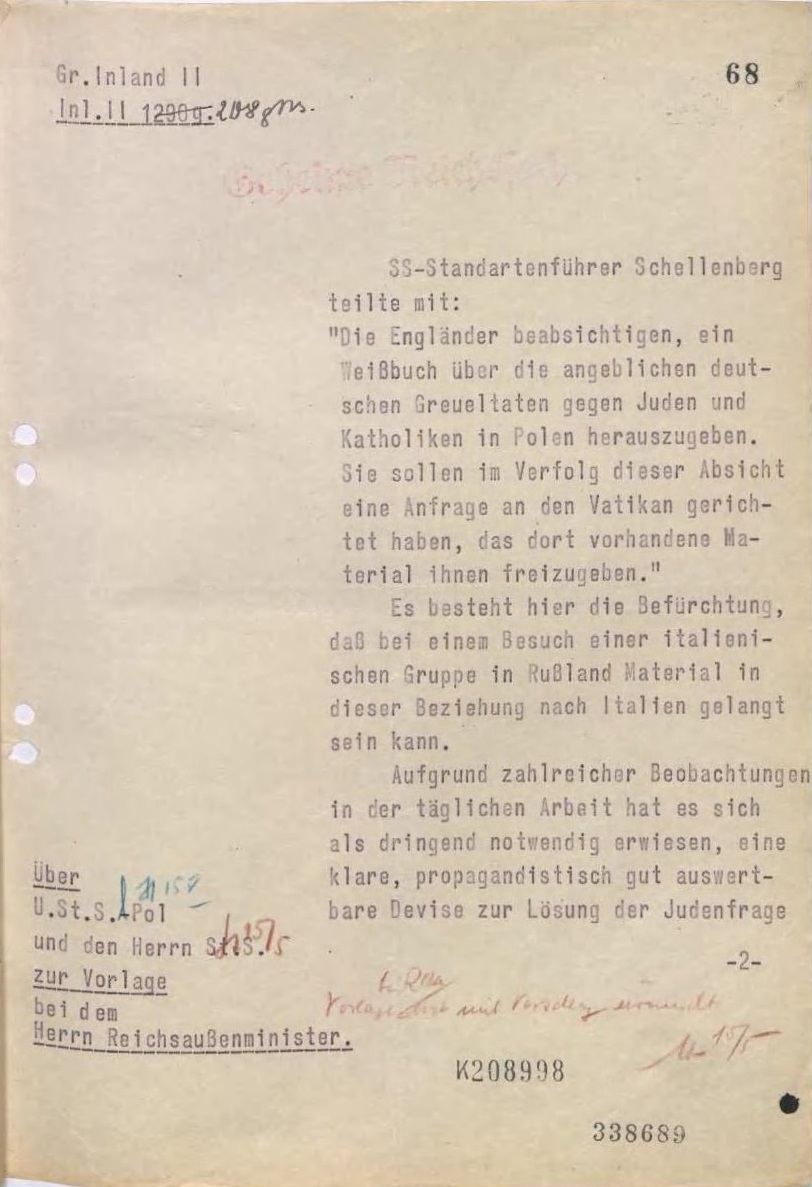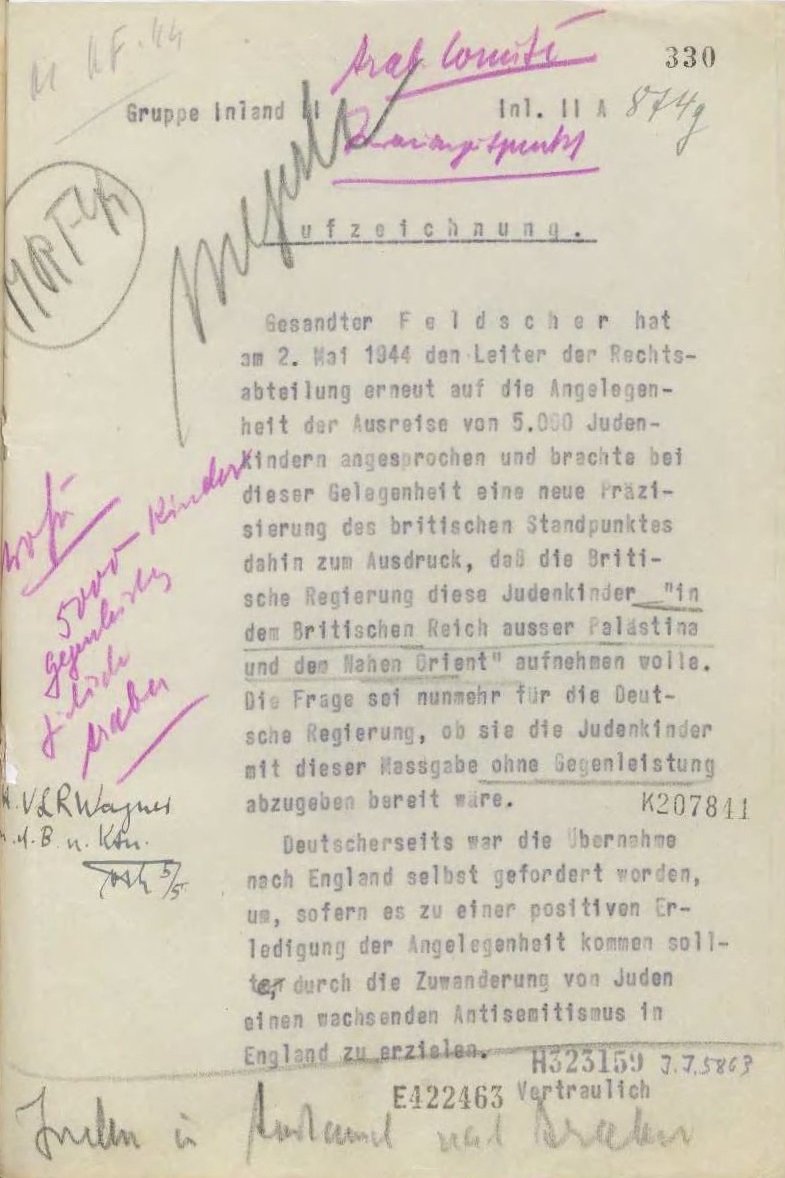Latest Posts
Manuscript of a speech delivered on November 18, 1941, by Alfred Rosenberg at his Reich Ministry for the Occupied Eastern
On September 1, 1944, Swiss envoy Hans Frölicher sent a letter to Swiss Foreign Minister Marcel Pilet-Golaz reporting on news
Paul Wurm, the Foreign Editor of the Nazi propaganda newspaper Der Stürmer and head of the so-called "Anti-Jewish World League,"
On September 18, 1941, Heinrich Himmler sent a letter to Arthur Greiser, Gauleiter of the Warthegau, conveying Hitler's request that
On December 18, 1941, Heinrich Himmler recorded a meeting with Adolf Hitler at the Führerhauptquartier (Wolfsschanze) in his Diensttagebuch (service
On August 1, 1941, Reich Minister Alfred Rosenberg led a high-level meeting to discuss the governance of Nazi-occupied territories in
In May 1943, Walter Schellenberg, head of RSHA Office VI (Ausland – SD-Ausland), informed the German Foreign Office of Britain’s
The Feldscher Aktion, named after Swiss diplomat Peter Anton Feldscher, represented a significant diplomatic effort by the British government during
Memo by SS-Sturmbannführer Herbert Strickner, head of RSHA Department III (Volkstum, or Ethnicity), analyzing occupation policy from 1939 to 1944
